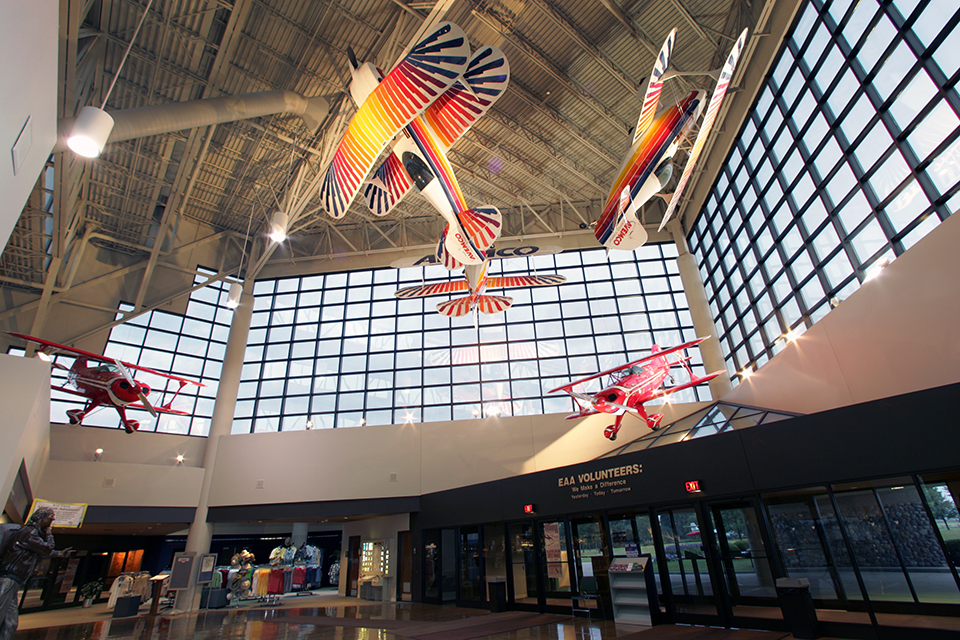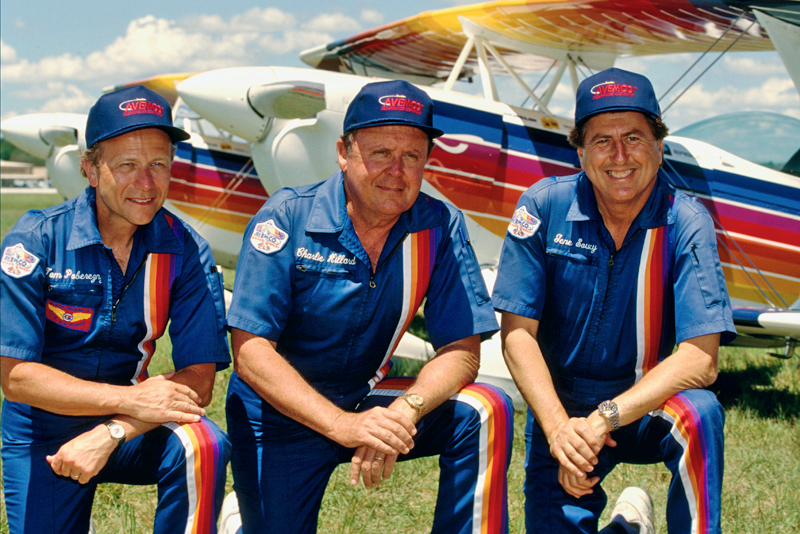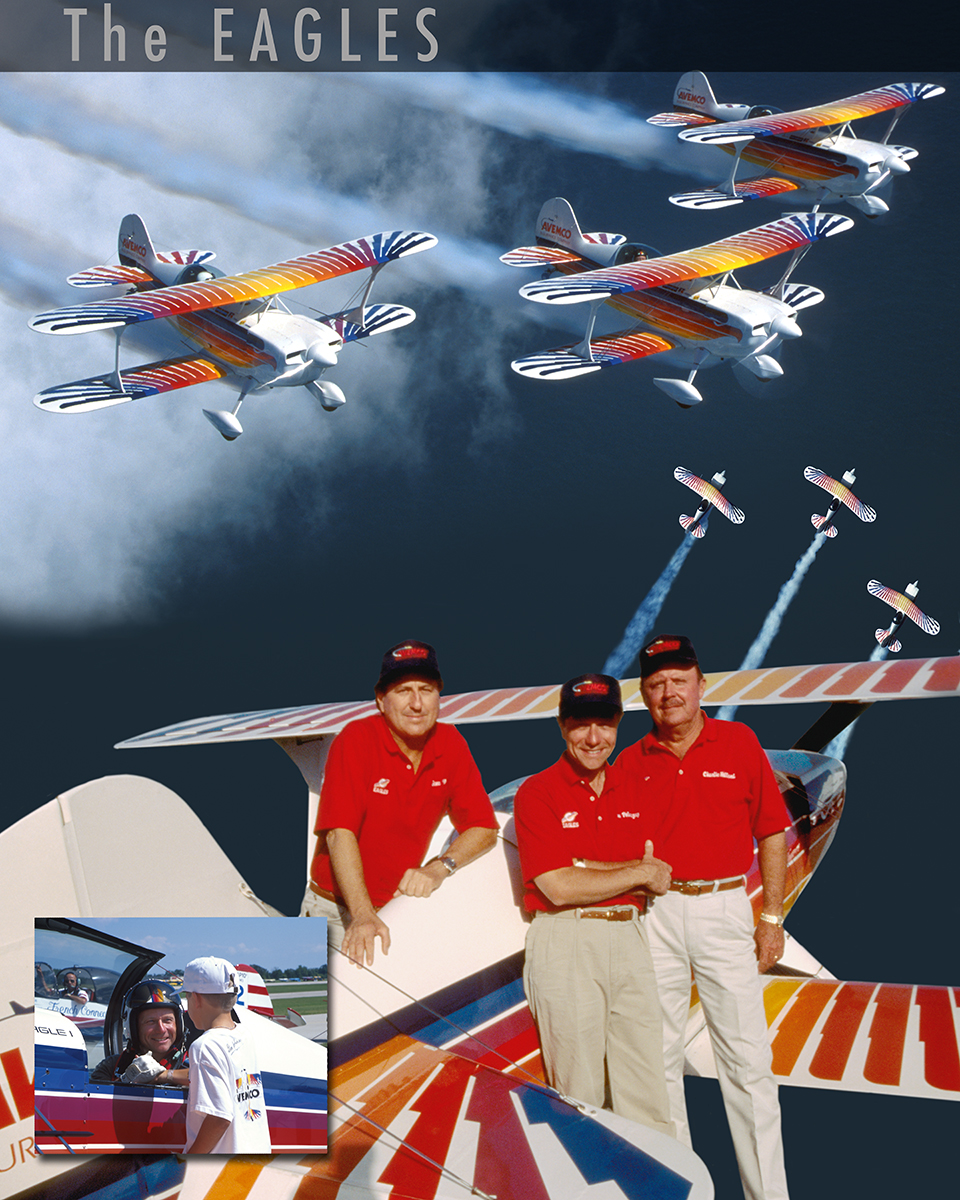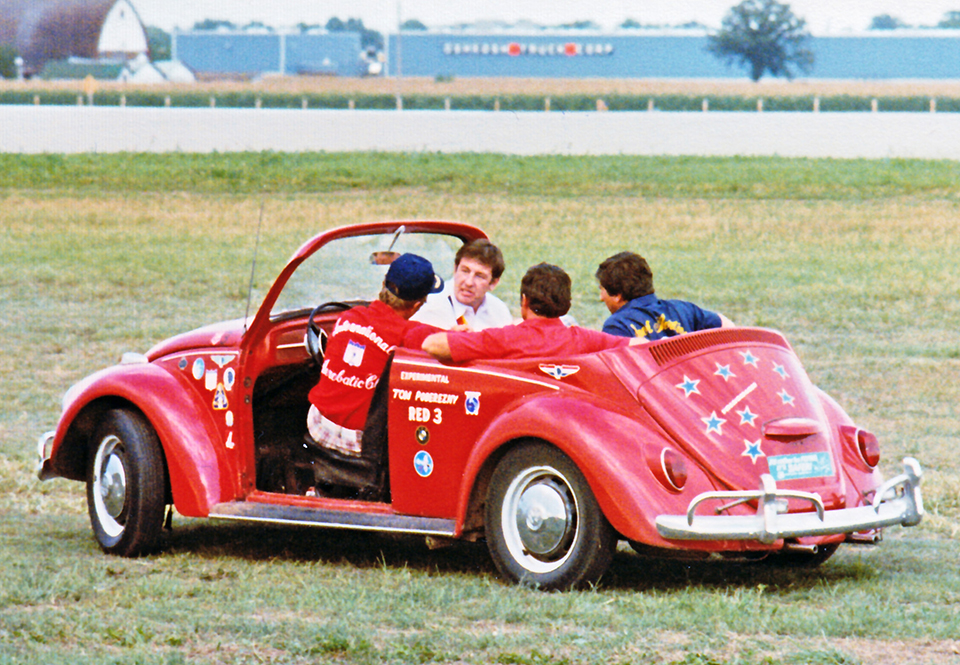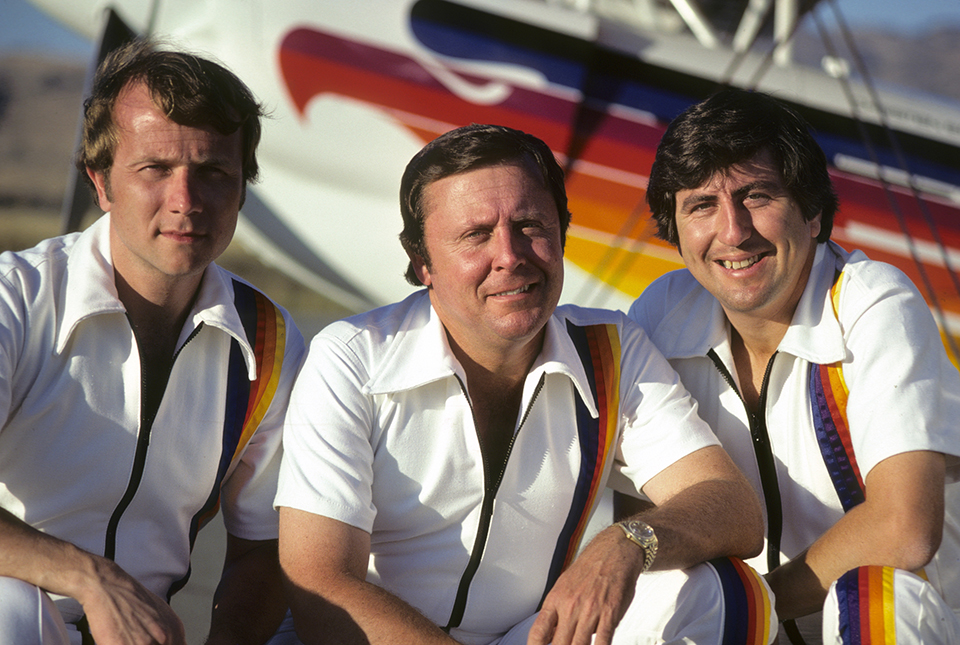1979 Christen Eagle I-F - N41ET, N42ET, N43ET
Location: Museum Lobby
The Christen Eagle was designed by Christen Industries founder Frank Christensen, EAA Lifetime 36663. Christensen was an aerobatic pilot and manager of the U.S. Aerobatic Team that won the 1972 World Aerobatic Championship.
The Christen Eagle I was built specifically for the Eagles Aerobatic Team — made up of Charlie Hillard, Tom Poberezny, and Gene Soucy — which had previously flown Pitts Specials as the Red Devils aerobatic team. Christensen met with the three pilots at Oshkosh and they hashed out a deal while sitting in Poberezny’s Volkswagen, and the Eagles Aerobatic Team was born.
This single-place aircraft was never available in kit form, but was used to promote the Christen Eagle line of aircraft. The model offered as a kit was the Christen Eagle II, the two-place version of the design. The prototype of the Eagle II is also on display at the EAA Aviation Museum.
The Eagles Aerobatic Team’s airplanes now hang in the EAA Aviation Museum lobby. Hillard, Poberezny, and Soucy flew the Eagles in aerobatic performances from 1979 until 1995. At the close of their farewell performance during EAA Oshkosh 1995, they had been flying together for 25 years (including their time as the Red Devils), longer than any other team in aerobatic history.
Length: 17 feet, 11 inches
Wingspan: 19 feet, 11 inches
Height: 6 feet, 6 inches
Seats: 1
Empty Weight: 978 pounds
Gross Weight: 1,478 pounds
Maximum Speed: 189 mph
Cruise Speed: 162 mph
Powerplant: Lycoming AEI0-540-D4B5
Horsepower: 260 hp

